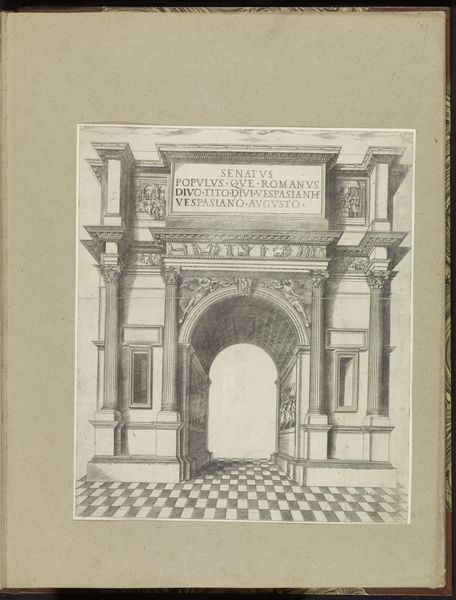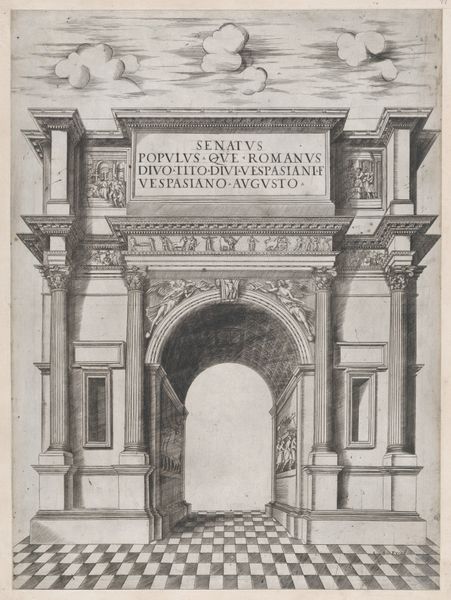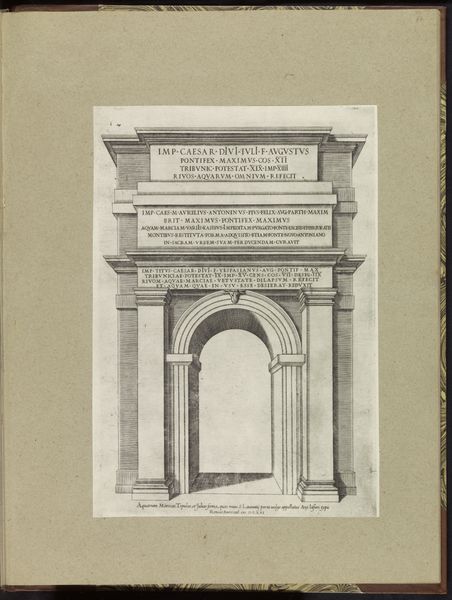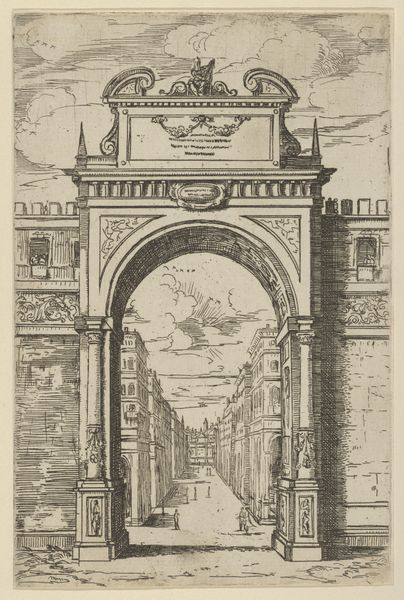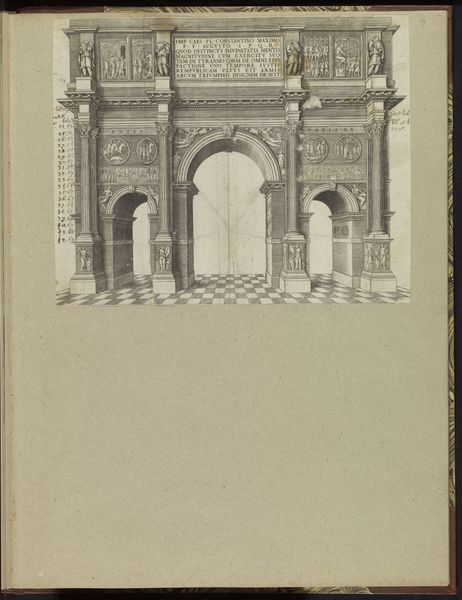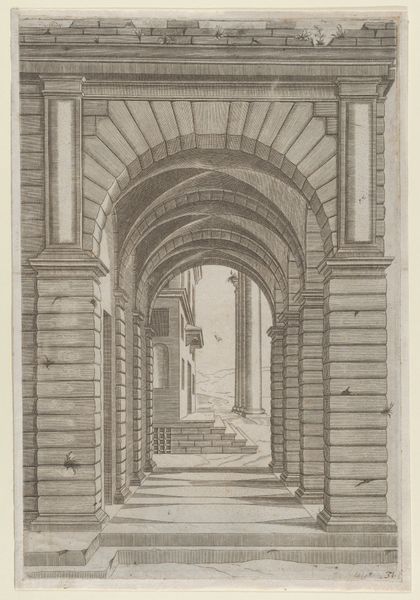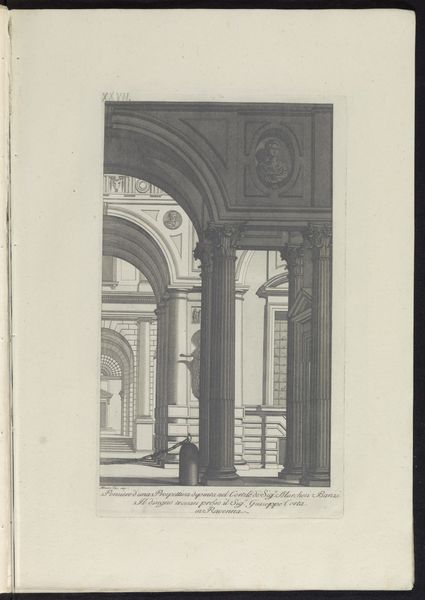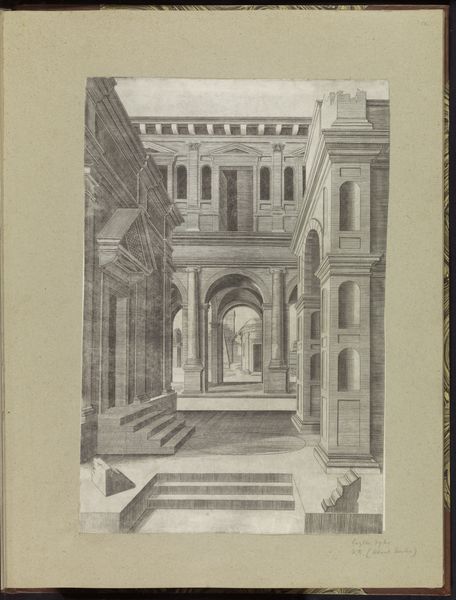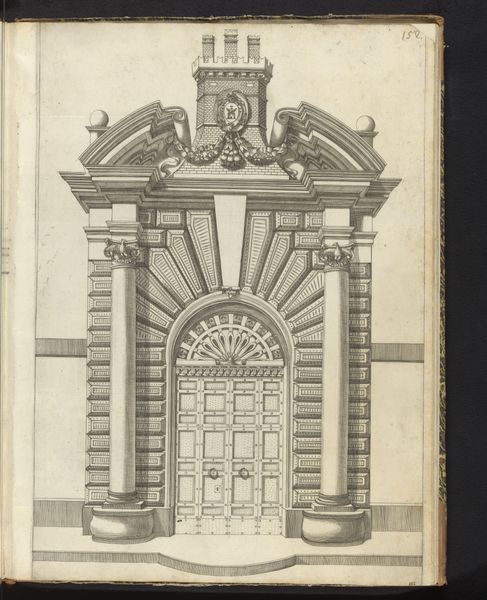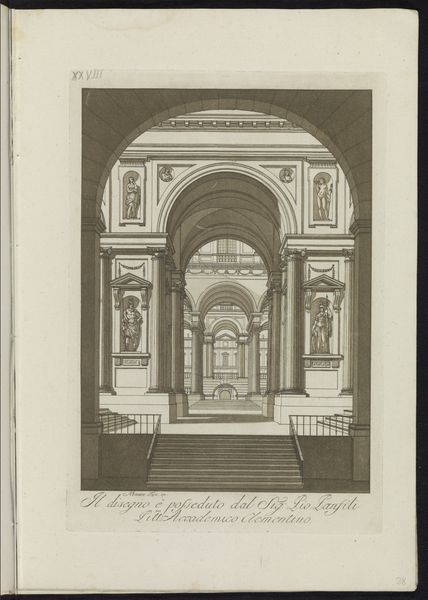
drawing, paper, ink, pencil, architecture
#
drawing
#
classical-realism
#
paper
#
11_renaissance
#
ink
#
coloured pencil
#
geometric
#
pencil
#
cityscape
#
history-painting
#
architecture
Dimensions: height 490 mm, width 371 mm
Copyright: Rijks Museum: Open Domain
Curator: What we have here is an intriguing architectural study titled “Boog van Titus te Rome,” or "Arch of Titus in Rome," dating back to 1548. It is an anonymous work held at the Rijksmuseum, executed in ink and pencil on paper. It’s so precise. Editor: It does give the immediate impression of… coolness. Not cold, exactly, but precise and balanced. All those ruled lines. Makes me wonder what kind of person spent hours rendering this thing! The materiality seems central. Curator: Yes, that sense of precision underscores the classical realism here. It’s all about accuracy and detail, serving as a record of architectural achievement. Look at the detail in the carving. The lettering is precise, and the very slight indications of shadow hint at its bulk. It is an assertion of imperial might, in a sense, transcribed onto paper. Editor: I am curious about the paper itself. What was the labor behind making that possible? The unseen artisan, pulping, pressing, and drying... Did the draughtsman even consider the socio-economic elements required to create this thing in the first place? What inks and pencils did they use and where did they get them? These details elevate the image itself into this wider network of production! Curator: Fair enough! Yet focusing on the materials almost diminishes the intent of the artist. The arch, for all its material construction, represents an idea—victory, empire, lasting legacy. That to me seems paramount here. Though yes, it has been realized through intensely refined craft, of course, giving physical shape to power and memory. I like that idea actually, power having physical form and that this drawing represents not just the physical architecture, but also power on paper. Editor: It really gets me thinking about accessibility. Monumental architecture is for the eyes, declaring permanence and access for everyone who visits it. But turning that into a drawing and archiving it inside paper makes me wonder; is it power and information available only to few people, rather than everyone? Curator: Fascinating points. The physical arch proclaims Roman power, but its rendering on paper—potentially distributed more widely—offers a kind of democratisation, but for those who were literate and perhaps wealthy enough to buy these sorts of drawings. It almost seems a bit of an oxymoron, like how imperial authority finds itself on paper! The drawing now invites reflection, allowing us to contemplate not just Titus, but all those less-seen processes of making and meaning that contribute to it. Editor: Precisely! Every arch, and every image of it, represents a sum of visible and invisible labor, ideas of its own, and a window into that historical moment! Curator: Nicely put. This unassuming sheet holds more stories than we might initially imagine!
Comments
No comments
Be the first to comment and join the conversation on the ultimate creative platform.
